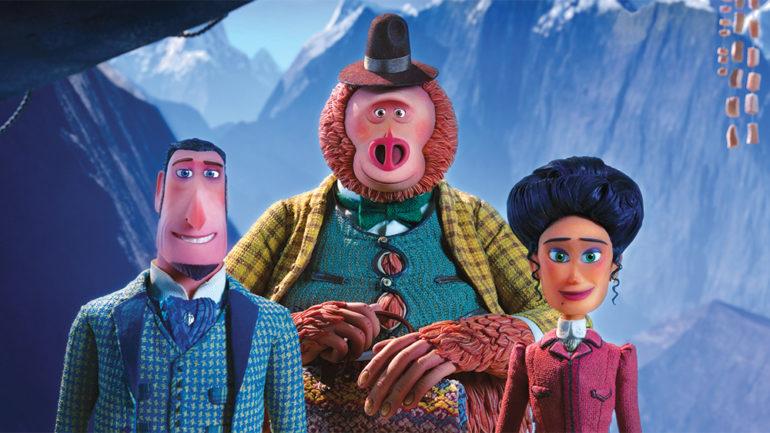New 3D-Printing Technology Was ‘Missing Link’ for Laika’s Latest Stop-Motion Project
By Karen Idelson
LOS ANGELES (Variety.com) – For the upcoming animated comedy adventure “Missing Link,” stop-motion studio Laika set the bar very high. To execute the designs created by director and writer Chris Butler, artists would have to speed up their 3D printing of character faces — and those faces would have to be the most complex they’d ever created.
“” centers on Sir Lionel Frost (voiced by Hugh Jackman), a self-styled investigator of myths and monsters whose skill is not acknowledged by his small-minded high-society peers. So Frost travels to the Pacific Northwest to prove the existence of the legendary Missing Link (voiced by Zach Galifianakis). Other voice actors include Zoe Saldana, Timothy Olyphant and Emma Thompson.
, based in Portland, Ore., brought to “Link” its signature handcrafted stop-motion animation, which it couldn’t have developed without the speed of 3D-printing technology. While the concepts of hand crafting and digital printing may seem at odds with each other, their combination is the main ingredient of Laika’s creative secret sauce.
The studio began the process of 3D printing of faces to painstakingly fashion expressions for the stop-motion characters in 2009’s “Coraline.” That project was completed with about 20,000 unique faces. For 2016’s “Kubo and the Two Strings” the number of expressions jumped to 64,000. “Missing Link,” to be released April 12, will feature a whopping 106,000.
“In the past, a lot of our process was based on reusing facial expressions,” says Brian McLean, director of rapid prototyping at Laika. “Now, with this technology and everything that we’ve learned, we’ve gotten to the point where we actually could be producing shot-specific animation.”
The process requires several steps, notes McLean. “A CG animator sits at a computer working in Maya [software], listening to a line of dialogue that the director has approved. They’re seeing the storyboards and exactly what the action needs to be, and they’re building a customized facial performance in the computer. It gets sent to editorial, where the director will review it and give specific notes. CG will then go in and change the performance. And when the director approves it, we take that CG performance and we export the geometry to the 3D printer.”
Even though dialing in the geometry created by a CG artist made it possible to create highly specific expressions, some designs were still hard on the printers — specifically those for Lionel.
“When it came time to try to figure out a way to print Lionel’s nose — this pointy little triangle — we knew this technology was not going to suffice,” explains McLean. But Laika had a long relationship with 3D printer manufacturer Stratasys dating back to “Coraline.” “Stratasys had just started to play around with color resin, and they let us have a new printer about a year before it was available to the public,” McLean says. “The hardware was amazing, but the software was pretty limited. So we had to take hardware from one company and software from another.”
McLean and his team selected Cuttlefish software that could handle the high demands of 3D color printing, and the new cutting-edge printer was able to make Lionel’s nose a reality.
Says McLean of the requirements in meeting both the demands for specialty work and the sheer number of more than 100,000 expressions: “It’s scary and exciting to get to solve these challenges.”

